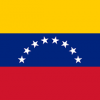Hello,
I am studying the neutralization of Linear Alkyl Benzene Sulphonic Acid (LABSA) with Caustic Soda (50% concentration i.e. 150kg water and 150 kg NaOH) in the process of slurry making for the detergent industry. The starts by charging water (900 kg) into the reactor and then adding caustic soda (300 kg) thereby diluting it to 10%. Then LABSA (1050 kg) is added for neutralizaition reaction. The product is LAS salt and water.
The reaction is as follows:
CH3(CH2)11C6H4SO3H + 3NaOH =====> CH3(CH2)11C6H4SO3Na + 3H2O
It is required that the resulting paste from the above reaction contains no acid which means that all of the LABSA should be consumed (making it the limiting reactant). However, stoichiometrically NaOH is the limiting reactant according to the provided masses.
It should be noted that water is added to make up the quantity of NaOH, so that it is enough to react with the supplied LABSA. But adding water does not convert it into NaOH which means that the quantity of NaOH remains the same (i.e. 150 kg).
My question is, where does the rest of the NaOH comes from? Is it possible to use water instead of NaOH in the provided reaction? What should be the limiting reactant keeping in mind the provided condition i.e. all of the LABSA should be consumed?
Please feel free to ask anything which is unclear.

 FB
FB









